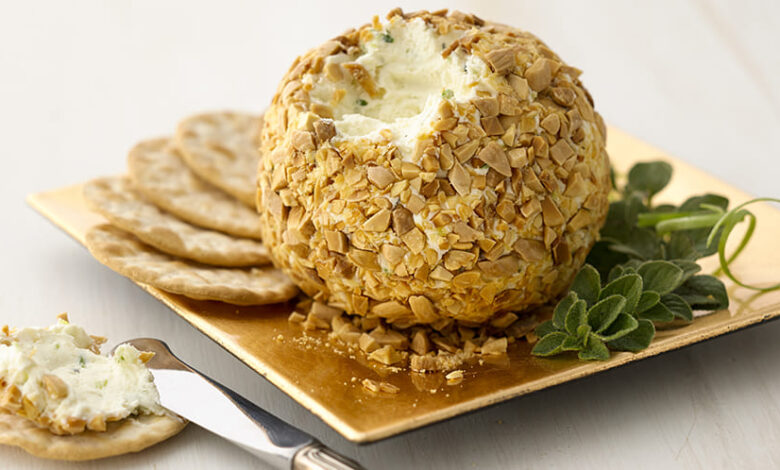Grouse Cheese: Discover Its Unique Flavor and Story

When you think of artisan cheese, your mind might drift to creamy brie from France, sharp cheddar from England, or perhaps a nutty Parmigiano-Reggiano from Italy. But tucked away in the rolling hills of select American and Canadian regions lies a lesser-known treasure: Grouse Cheese. This distinctive cheese, with its earthy, complex flavors and small-batch craftsmanship, is slowly carving out a niche among food enthusiasts. If you haven’t yet encountered Grouse Cheese, allow me to take you on a journey through its origins, production, and why it deserves a spot on your cheese board.
Table of contents
What Is Grouse Cheese?
Grouse Cheese is not your everyday supermarket cheddar. It’s a specialty cheese, often crafted in limited quantities by small dairies in regions like the Pacific Northwest of the United States or parts of British Columbia in Canada. Named after the grouse, a bird native to these areas, this cheese reflects the rugged, natural landscapes where it’s made. Its flavor profile is a delightful mix of nutty, earthy, and slightly tangy notes, with a texture that can range from semi-soft to firm, depending on the aging process.
The cheese is typically made from cow’s milk, though some producers experiment with goat or sheep milk for unique variations. What sets Grouse Cheese apart is its artisanal approach—every wheel is handcrafted, often using traditional methods passed down through generations. The result is a product that feels personal, almost like a love letter from the cheesemaker to your taste buds.
The History Behind Grouse Cheese
Roots in Rural Tradition
The story of Grouse Cheese begins in the small, family-run dairies of North America’s temperate regions. While the exact origins are murky—cheesemaking records from small farms are rarely comprehensive—the cheese likely emerged in the late 20th century as part of the broader artisan food movement. Farmers in areas like Washington State and Vancouver Island, inspired by European cheesemaking traditions, began experimenting with local ingredients to create something distinctly their own.
The name “Grouse” is a nod to the bird that thrives in the forests and fields of these regions. Much like the grouse itself, the cheese embodies a connection to the land—wild, unpretentious, and deeply rooted in its environment. Early producers used milk from local herds, often grazing on diverse pastures filled with wild herbs and grasses, which impart unique flavors to the cheese.
A Modern Revival
In recent years, Grouse Cheese has experienced a quiet renaissance. As consumers grow more interested in sustainable, locally sourced foods, small dairies have found a new audience for their craft. Food festivals, farmers’ markets, and specialty grocers have become showcases for Grouse Cheese, where cheesemakers share their stories and samples with curious foodies. This revival isn’t just about nostalgia; it’s about celebrating the individuality of small-scale production in an era dominated by mass-produced dairy.
How Grouse Cheese Is Made
The Art of Small-Batch Cheesemaking
Making Grouse Cheese is a labor of love. The process begins with high-quality milk, often sourced from local farms where cows graze on lush, diverse pastures. This milk is gently heated and combined with rennet and starter cultures to begin the curdling process. Cheesemakers carefully monitor the temperature and timing, as even small variations can alter the final flavor.
Once the curds form, they’re cut, stirred, and pressed into molds. The cheese is then aged, sometimes for months, in carefully controlled environments. Some producers add unique touches, like washing the rind with local wines or beers to enhance the flavor. The result is a cheese that’s as much a product of its environment as it is of the cheesemaker’s skill.
The Role of Terroir
If you’ve ever heard of “terroir” in winemaking, the same concept applies to Grouse Cheese. The grasses, herbs, and even the air in the regions where it’s made influence its flavor. For example, a wheel of Grouse Cheese from a coastal dairy might carry subtle briny notes, while one from an inland farm could lean more toward grassy, herbal undertones. This connection to place makes every batch of Grouse Cheese a unique experience, even for seasoned cheese lovers.
Why Grouse Cheese Stands Out
A Flavor Like No Other
Tasting Grouse Cheese is an adventure. Its flavor profile is complex, often starting with a creamy, nutty richness that gives way to earthy, almost mushroom-like undertones. Some varieties have a slight tanginess that lingers on the palate, making it a versatile cheese for both snacking and cooking. Whether you’re slicing it for a sandwich or grating it over a warm dish, Grouse Cheese delivers a depth of flavor that’s hard to forget.
A Sustainable Choice
In a world where industrial food production often takes a toll on the environment, Grouse Cheese offers a more sustainable alternative. Many producers prioritize ethical farming practices, such as rotational grazing and organic feed for their herds. By supporting these small dairies, you’re not just treating yourself to a delicious cheese—you’re also contributing to a more sustainable food system.
Versatility in the Kitchen
Grouse Cheese is a chameleon in the kitchen. Its semi-soft to firm texture makes it ideal for melting, grating, or serving as is. Pair it with a crisp apple slice and a glass of Sauvignon Blanc for a simple yet elegant appetizer. Or, incorporate it into a creamy pasta sauce for a dish that feels both rustic and refined. Its bold flavor also holds up well in recipes with strong ingredients, like roasted garlic or smoked meats.
How to Enjoy Grouse Cheese
Pairing Suggestions
To truly appreciate Grouse Cheese, consider pairing it with complementary flavors. A crusty sourdough bread and a dollop of fig jam can elevate its earthy notes. For beverages, try a light red wine like Pinot Noir or a craft cider from the same region as the cheese. If you’re feeling adventurous, pair it with a hoppy IPA—the bitterness of the beer contrasts beautifully with the cheese’s richness.
Incorporating It Into Meals
Grouse Cheese shines in both simple and sophisticated dishes. For a quick lunch, layer it on a sandwich with arugula, prosciutto, and a drizzle of balsamic glaze. For dinner, try melting it into a gratin with potatoes and leeks for a comforting, flavorful side dish. If you’re hosting a gathering, a Grouse Cheese charcuterie board with nuts, dried fruits, and local honey will impress your guests without much effort.
Where to Find It
Finding Grouse Cheese can be a bit of a treasure hunt, as it’s not widely available in large chain stores. Check local farmers’ markets, specialty food shops, or online retailers that focus on artisan products. Some dairies also offer direct-to-consumer sales through their websites, allowing you to order fresh wheels or wedges straight from the source.
Grouse Cheese and the Artisan Food Movement
The rise of Grouse Cheese mirrors a broader trend toward artisan and locally produced foods. As consumers become more curious about where their food comes from, small-scale producers are stepping into the spotlight. Grouse Cheese embodies this movement, offering a product that’s not just delicious but also tells a story of craftsmanship, tradition, and environmental stewardship.
If you’re a fan of other artisan cheeses, you might enjoy exploring our article on The Rise of Artisan Goat Cheese, which dives into another corner of the specialty dairy world. Like Grouse Cheese, these products highlight the creativity and passion of small-scale producers.
Challenges and Opportunities for Grouse Cheese
While Grouse Cheese is gaining popularity, it faces challenges. Small dairies often struggle with the costs of production, distribution, and competing with larger brands. However, the growing demand for unique, high-quality foods presents an opportunity. By educating consumers about the value of artisan cheese, producers can build a loyal following and ensure the longevity of their craft.
Explore more content businessvantify.com
Conclusion
Grouse Cheese may not yet have the fame of Gouda or the ubiquity of cheddar, but its rich flavor, sustainable production, and deep connection to its origins make it a standout in the world of artisan dairy. Whether you’re a cheese connoisseur or simply someone who loves good food, Grouse Cheese offers a taste of something special. Next time you’re planning a meal or a gathering, seek out this hidden gem and let its earthy, nutty goodness surprise you. It’s more than just cheese—it’s a celebration of tradition, terroir, and the joy of discovery.
FAQs
Where can I buy Grouse Cheese?
You can find Grouse Cheese at farmers’ markets, specialty food stores, or through online retailers that focus on artisan products. Some dairies also sell directly to consumers via their websites, so check for local producers in regions like Washington or British Columbia.
How should I store Grouse Cheese?
Store Grouse Cheese in the refrigerator, ideally wrapped in wax paper or parchment to allow it to breathe while keeping it fresh. Avoid plastic wrap, as it can trap moisture and affect the flavor. Keep it in the coldest part of your fridge, typically the bottom shelf.
Can I use Grouse Cheese in cooking?
Absolutely! Grouse Cheese is versatile and works well in both raw and cooked dishes. Try it in sandwiches, melted into gratins, or grated over pasta. Its bold flavor pairs well with ingredients like garlic, herbs, and smoked meats.
Is Grouse Cheese suitable for vegetarians?
Most Grouse Cheese is made with animal rennet, which may not be suitable for vegetarians. However, some producers offer vegetarian versions made with microbial rennet. Check with the dairy or retailer to confirm before purchasing.
Is Grouse a Cheese?
You might wonder if “Grouse” refers to an actual cheese, given its unusual name. Indeed, Grouse Cheese is a real, distinct type of artisan cheese, not just a whimsical label.





